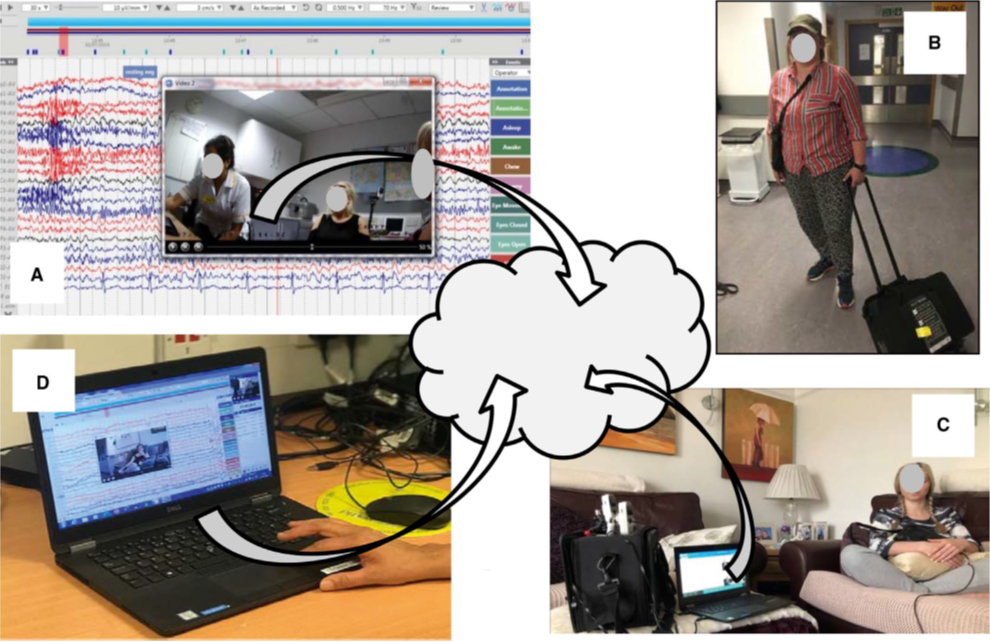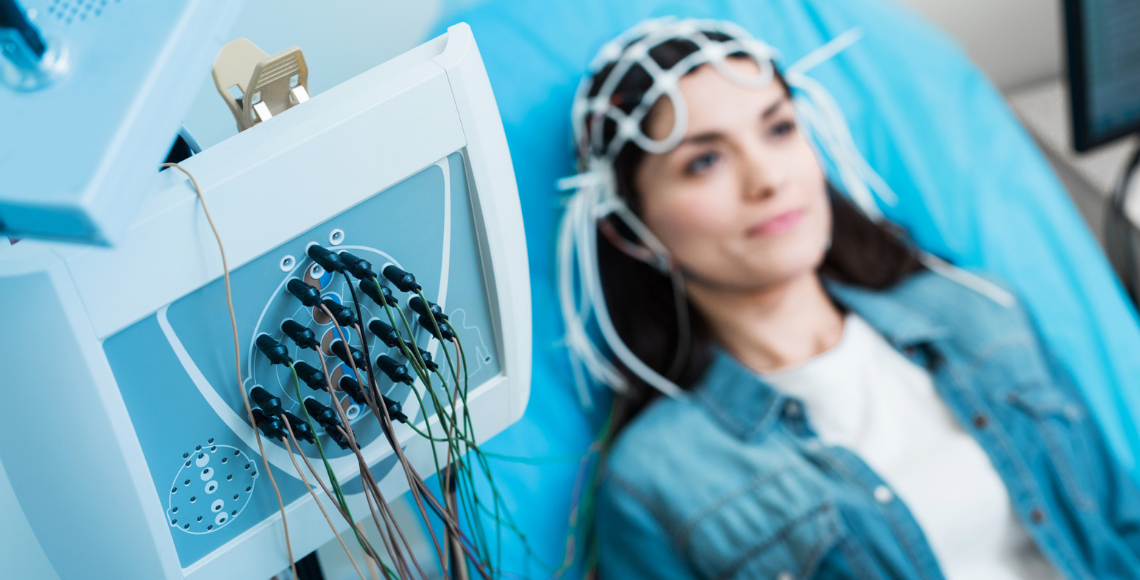Taking video-EEG from hospital to home
Epilepsy is common, affecting one per cent of people in the UK. It can be difficult to diagnose because people with epilepsy often show no signs between seizures and they usually occur without any expert witness.
The gold standard diagnostic approach is to capture seizures in hospital over several days of continuous video and electrical brain wave monitoring in hospital (video-EEG). Inpatient video-EEG monitoring is expensive (more than £2000 per admission), inconvenient for patients, and there are only 69 video-EEG beds in 32 centres in the UK, providing only 4200 video-EEG admissions per year.
A more acceptable system
To address the lack of video-EEG availability and to build a system more acceptable to patients, a National Institute for Health and Care Research (NIHR) Maudsley Biomedical Research Centre funded collaboration with King’s College Hospital and Guy’s and St Thomas’ Hospital evaluated whether prolonged video-EEG monitoring could be undertaken in the patient’s home.
We adopted a recognised framework (MRC) for development and evaluation of complex interventions, in three stages:
- A feasibility study in which patients undertake video-EEG monitoring in hospital and at home. For this we produced portable ambulatory EEG amplifiers with desktop video cameras to create a video-EEG monitoring unit at home. There was no difference between home and hospital in either the quality of video-EEG recording or the diagnostic outcomes.
- A pre-implementation study to examine acceptability, satisfaction, and costs. Video-EEG at home was preferred by patients, acceptable to clinicians, and much cheaper than video-EEG in hospital.
- Implementation and review of home video-EEG as a clinical service. Video-EEG at home was readily adopted by hospital clinical teams and ongoing data quality remained high.

The pictures above demonstrate how the cloud-based home video-electroencephalographic telemetry is currently implemented at King's College Hospital. A: Patient being set up in the hospital and initial data upload to the cloud service from the hospital. B: Patient ready to take equipment home. C: Patient reconnects recording to cloud through home Wi-Fi and enables data upload from home. D: Simultaneous monitoring, reviewing, pruning, reporting, and archiving from the hospital via the cloud service
UK guidelines for video-EEG monitoring with children
Our work won an NHS Innovations Challenge prize (2013) and the European Union-funded E-PILEPSY network cited our approach as an innovative method with significant benefits. Video-EEG at home has been incorporated into published UK guidelines for video-EEG monitoring with children.
King’s College Hospital, the largest UK EEG centre, now undertakes the majority of video-EEG investigations at home (about 350 per year). A similar approach has been implemented in other countries such as the USA, where approximately 35,000 home video-EEG investigations are now undertaken every year. We continue to disseminate our method via workshops to increase uptake of this patient preferred assessment, for example at the International Congresses on Mobile Devices and Seizure Detection in Epilepsy.
IMPACT AREAS:
Involving Patients in Research | Novel Diagnostics and Therapeutics | Improving Access and Uptake | Personalising Treatment to Patients








